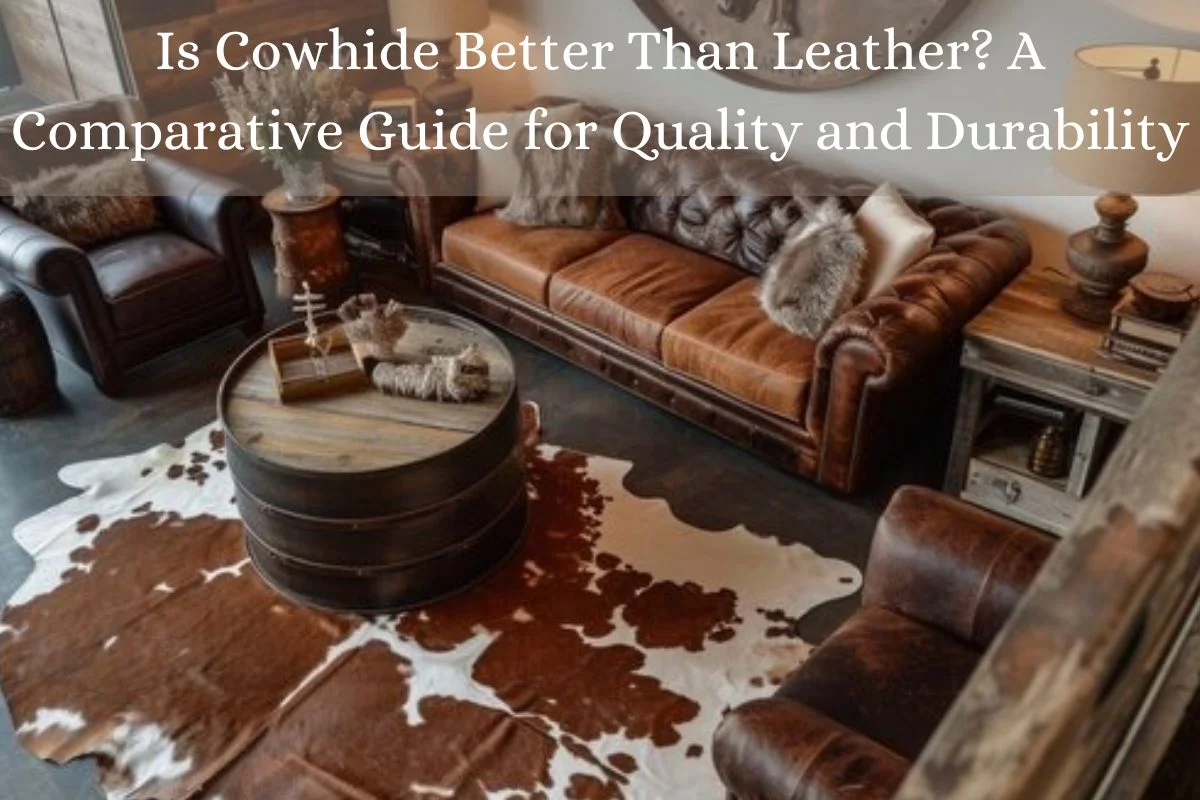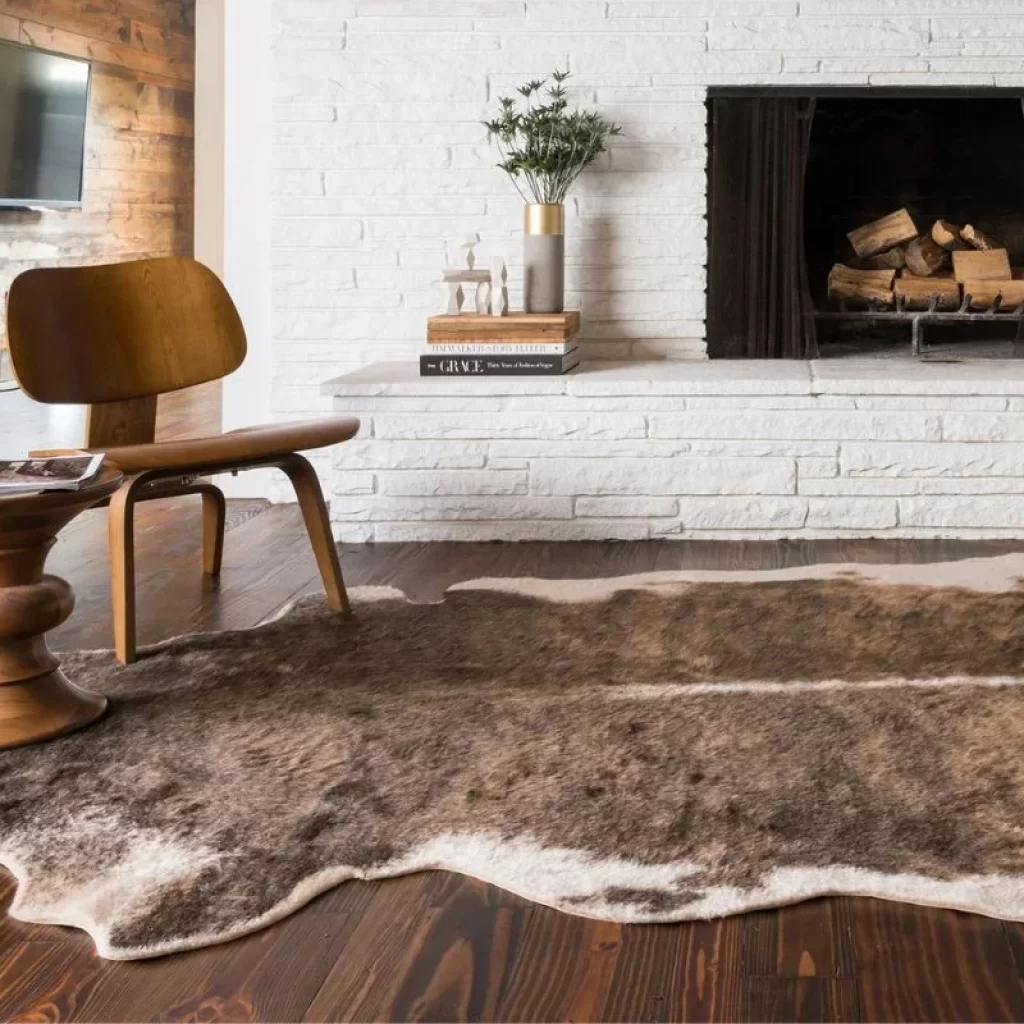
Is Cowhide Better Than Leather? A Comparative Guide for Quality and Durability
Choosing between cowhide and leather can be a daunting task for consumers seeking quality and durability. Both materials have their unique characteristics, making them popular choices for furniture, fashion, and home decor. Cowhide, derived from cattle, is celebrated for its natural beauty and robustness, showcasing distinct patterns and textures. Leather, on the other hand, encompasses a variety of animal hides and is known for its versatility and sophisticated appeal. Understanding the differences in quality, durability, maintenance, aesthetics, and sustainability is crucial for making an informed decision. This guide will explore these factors, helping you determine which material best suits your needs.

Definition and Composition
Cowhide refers to the skin of cattle that has been tanned to create a durable material. It retains the natural characteristics of the animal’s hide, including unique patterns and textures. Leather, on the other hand, is a broader term encompassing various animal hides, including cow, goat, and sheep, processed through tanning. While cowhide is a type of leather, it is distinguished by its thickness and durability. The tanning process for cowhide often involves vegetable tanning, which enhances its natural qualities, while other leathers may undergo chrome tanning for a different finish and feel.
Quality Showdown: Cowhide vs. Leather – Which Material Reigns Supreme
Cowhide is often regarded for its natural variability, showcasing unique markings that add character to products. Unlike processed leather, which may have a uniform appearance due to heavy treatments, cowhide retains its authentic look. The quality of cowhide can vary based on the source and tanning method, with premium options offering better durability and aesthetic appeal. Leather quality is typically classified into grades, such as full-grain, top-grain, and genuine leather. Full-grain leather is the highest quality, retaining its natural grain, while lower grades may have imperfections covered by finishes.
Durability Factors: Unveiling the Strength of Cowhide vs. Leather
Both cowhide and leather are known for their durability, but cowhide tends to be thicker and more robust, making it ideal for high-traffic areas and heavy use. Its inherent strength allows it to withstand tears and abrasions better than many processed leathers. Water resistance varies; while treated leather can repel water, untreated cowhide is generally less water-resistant. However, some cowhide products undergo treatments to enhance their resilience against moisture. Understanding these factors can help consumers choose the right material based on their intended use, ensuring long-lasting satisfaction with their investment.
Maintenance and Care
Maintenance requirements differ significantly between cowhide and leather. Cowhide often requires minimal maintenance due to its natural resilience, needing only regular vacuuming and occasional spot cleaning. In contrast, leather typically requires conditioning to prevent drying and cracking, especially in dry climates. Leather cleaners and conditioners can enhance its lifespan but necessitate more effort and cost over time. Proper care for both materials is essential to maintain their appearance and durability. Consumers should be aware of these maintenance requirements to ensure their investment remains attractive and functional for years.
Aesthetic Appeal: Embracing the Unique Beauty of Cowhide and Leather
Aesthetic appeal is subjective, yet cowhide and leather offer distinct visual characteristics. Cowhide features unique patterns, colors, and textures that lend a rustic, natural look to any space, making it popular for area rugs and upholstery. Its organic beauty can add warmth and character to interiors. Conversely, leather provides a sleek, sophisticated appearance that suits various design styles, from modern to classic. Leather can be dyed in a range of colors and finishes, allowing for customization. Ultimately, the choice between cowhide and leather depends on personal style preferences and the intended use in interior design.
Cost Considerations: Evaluating Value Beyond the Price Tag
When evaluating cost, cowhide and leather vary significantly based on quality and source. Generally, cowhide products tend to be more affordable than high-quality leather items, especially full-grain leather, which can be expensive due to its superior durability and craftsmanship. However, the initial price should be weighed against long-term value. Cowhide’s durability often leads to lower replacement costs, while leather may incur additional maintenance expenses. Understanding these cost dynamics helps consumers make informed decisions, balancing budget constraints with the longevity and aesthetic appeal of their chosen materials.
Sustainability and Ethical Considerations
Sustainability and ethical sourcing are increasingly relevant in consumer choices. Cowhide, often a byproduct of the beef industry, may be considered more sustainable since it utilizes resources that would otherwise go to waste. Conversely, leather production can have a significant environmental impact due to the tanning processes involved, especially when chemicals are used. However, not all leather is created equal; some brands prioritize sustainable practices, using vegetable tanning methods and sourcing hides responsibly. Consumers interested in eco-friendly options should research brands and products to ensure their purchases align with their values regarding sustainability.

Consumer Preferences
Consumer preferences for cowhide versus leather often hinge on specific applications and personal taste. For furniture, cowhide’s unique patterns attract those seeking a rustic or bohemian aesthetic, while leather is favored for its sophisticated appeal. In fashion, leather products like jackets and bags are classic choices, while cowhide accessories are seen as trendy and unique. Additionally, some consumers prioritize durability, opting for cowhide in high-traffic areas. Understanding these preferences can guide purchasing decisions, ensuring individuals choose materials that meet their functional needs and aesthetic desires.
Conclusion
In conclusion, the choice between cowhide and leather largely depends on individual needs and preferences. Cowhide offers unique aesthetic appeal, natural durability, and lower maintenance requirements, making it suitable for various applications. In contrast, leather provides a refined look and can cater to more formal styles. Both materials have their advantages and potential drawbacks. Therefore, consumers should consider factors such as intended use, maintenance, aesthetics, and sustainability when making their decision. Ultimately, both cowhide and leather can provide value and satisfaction, depending on personal style and practical needs.


0 comments